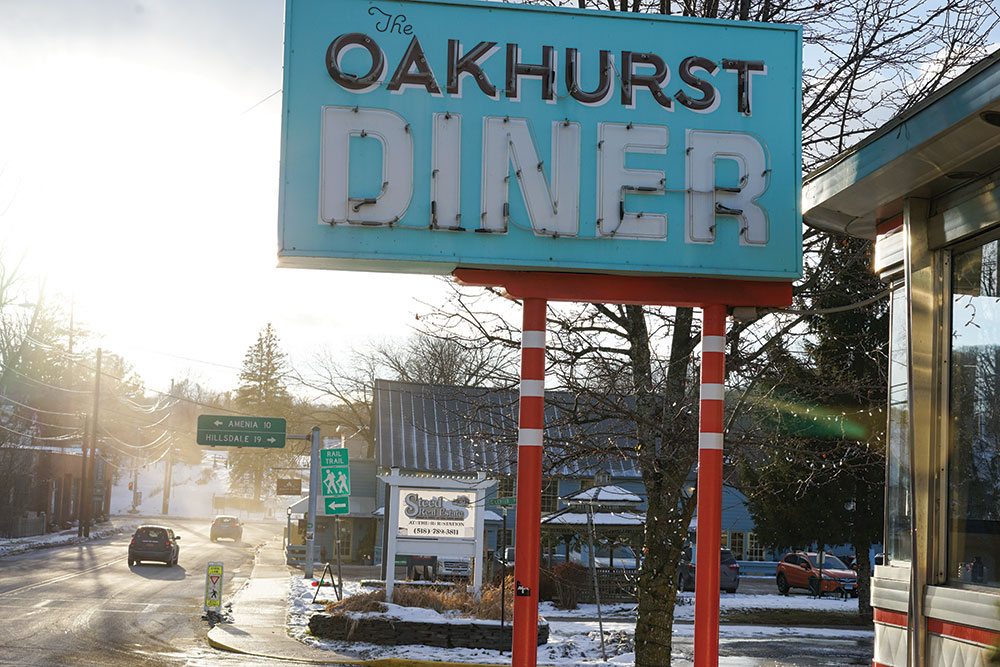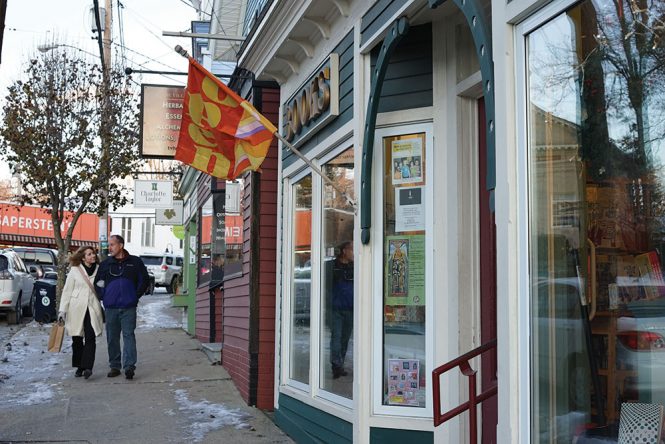Millerton: Urban Flair, Village Feel
By Elissa Garay | Spring 2018 | Community Spotlight
Hip little Millerton punches well above its weight—a village counting less than 1,000 inhabitants, it delivers delightful diversions that wouldn’t be out of place in a vibrant urban center many times its size. A skip down Millerton’s Main Street reveals a longstanding indie movie theater, tomes-and-tunes-packed music/bookstore, cavernous teahouse, chatty coffee shop, and several art galleries and antiques shops.
Located in the northeastern corner of Dutchess County near the Connecticut border and the Berkshires region, historic Millerton anchors the greater town of North East. Founded in 1851, Millerton began as a buzzing railroad junction (it’s named for railroad engineer Sidney Miller, who brought the train there), which established it as a commercial, agricultural, and transit hub. While the last of the three railroads that once chugged through town ended service in 1980, Millerton’s relevance as a stopover point remains, thanks to two major roadways traversing it (Routes 22 and 44), ensuring a steady flow of transient tri-state vehicular traffic and the amenities catering to it. And just as train passengers did for decades, those passing through Millerton today often end up staying a while.
THE SCENE
Millerton’s walkable main drag, Main Street, is lined with eclectic establishments, tucked within its historic district of mid-19th and 20th-century structures. Caffeine meccas include Irving Farm Coffee House, offering locally roasted coffee; and Harney & Sons Fine Teas, which features a tea-tasting room presenting 250 gourmet tea blends, a gift shop, and a tea lounge serving lunch. Visitors can rub elbows with locals at popular eateries like tapas joint 52 Main, Manna Dew Cafe, and the retro-styled Oakhurst Diner.
Millerton’s institutions include The Moviehouse, a four-screen cinema showing first-run and independent films (including obscure indie films, accompanied by Q&As with featured filmmakers, screenwriters, and actors), set within a clock tower-capped building dating to 1903; Oblong Books & Music, which has brimmed with books and music since 1975; and the Music Cellar, a recording studio and music school for all ages.
Musician Jonny Grusauskas, 30, the Music Cellar’s co-owner, moved to Millerton from Connecticut seven years ago, drawn by the village’s small scale and thriving cultural scene. “There’s a rich community of musicians,” he says. “It’s just small enough that everybody knows each other, and just big enough that you meet new people and can find new things to do.”
Lately, Millerton’s appeal is growing, Grusauskas notes. “It’s more crowded on weekends,” he says. “I guess more people are catching on that it’s a fun place to be. A lot of New Yorkers weekend up here and go antiquing.”
Indeed, antiquing beckons at Hunter Bee, Jennins & Rohn Montage, and Millerton Antiques Center, an emporium with more than 30 dealers. Visitors can step back in time at Millerton’s oldest shop, Terni’s, a hunting-and-fishing gear outfitter set to celebrate its centennial in 2019, or old-timey department store Saperstein’s, founded in 1946, which, after catering to the likes of Meryl Streep, will shutter its doors this year when owner Lew Saperstein retires.
Recent Main Street newcomers include yoga studio Buddhi Tribe; the Millerton Inn, which includes a Mediterranean eatery; and PLACE gallery (across the street from glass-blowing gallery and village mainstay Gilmor Glass Works), offering art shows, live music, and working studio space for co-owners painter Sonne Hernandez and furniture designer John Goudreault.
Hernandez, 43, who moved to Millerton from Brooklyn in 2015, describes PLACE as “really not just a gallery of things and art, but also a meeting ground for people through all art forms to share. We think community and being connected, not just through technology, but face to face, 9is becoming increasingly important.”
A community-gathering mindset is also evident at Millerton’s year-round farmers’ market, organized by the North East Community Center, a neighborhood organization that presents programming for youths and seniors as well as the annual Spring for Sound music festival (set this year for June 9).
Outside town can be found McEnroe Organic Farm, one of New York’s oldest certified-organic farms, complete with a market, and the Watershed Center, an activist retreat center on 73 acres, which hosts programs in ecological and social justice and partners with Rock Steady Farm & Flowers workers’ cooperative to run a community-supported agriculture project. Rudd Pond Area at Taconic State Park, 2.5 miles away, offers hiking, camping, boating, fishing, and swimming. The Harlem Valley Rail Trail, a recreational hiking and biking trail (bike rentals are available from the Music Cellar), stretches 11 miles along an old rail line from Main Street through the neighboring villages of Amenia and Wassaic; more than eight additional miles of trails are scheduled for development in late 2018.

Main Street is jammed with shops and eateries, and makes a great place for a stroll. Photo by John Garay.
THE MARKET
Millerton’s median home value hovers around $250,000, with most listings falling within the $150,000-to-$350,000 range. Many of the small-scale village’s limited and modest housing stock—largely two- to three-bedroom single-family homes built prior to World War II—are on side streets within walking distance of Main Street. While many village homes have generous yards, more substantial properties are available outside the village center. Case in point: Priced at $339,000 is a 1,200-square-feet, three-bedroom, three-bathroom 1860 home about a mile from Main Street. It’s been renovated for energy efficiency and sustainability with touches like recessed LED lighting, locally sourced ash wood floors, and a large deck overlooking its half-acre grounds.
